Recently I got an email from a reader who was upset at a recent string of failed efforts. He kept getting into a cycle of becoming really motivated, making some new habits or plans, and then having them crash down around him a few weeks later, leaving him even more depressed than before.
In talking with him, I realized there’s a useful concept that can help you think about what self-improvement actually is (when it works) so you can avoid these sorts of mistakes.
Two Kinds of Improvement
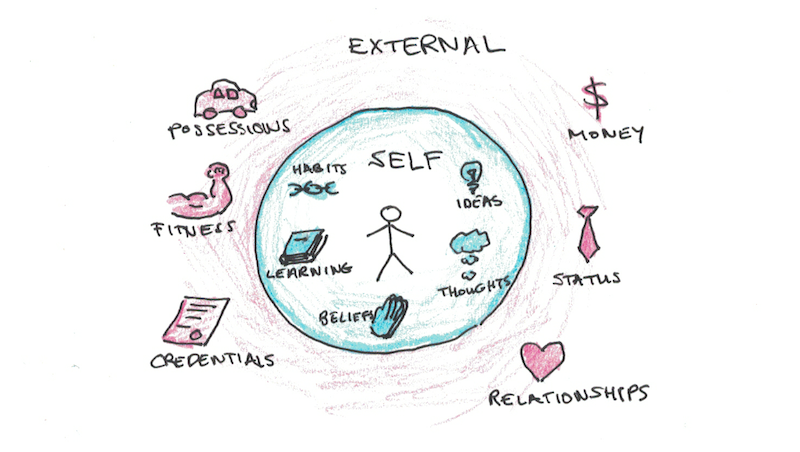
First, I need to draw a distinction.
Sometimes when people talk about self-improvement, they’re really talking about acquiring some kind of success in the world.
Maybe you keep doing what you’re doing, and you earn more money, make better friends, get in great shape and travel to exotic places.
This kind of improvement is an improvement to what I’ll call your life situation. These are the assets you have that improve the quality of your life without necessarily changing who you are as an individual.
Imagine Swapping Places with Someone Rich, Fit and Popular
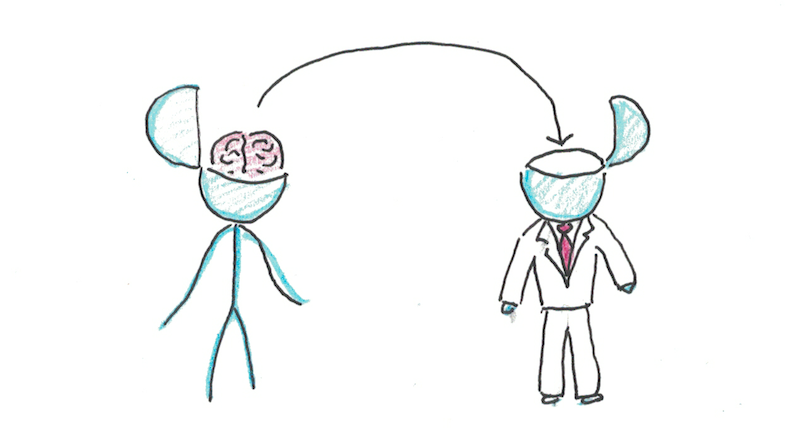
To see what I mean, imagine a Freaky Friday-like situation where your consciousness were miraculously swapped with someone who was much more successful than you. You look like they look, you’re friends with their friends, you’re as rich as they are. What changes in your life? What stays the same?
Aside from the sudden shock, you may find some of your problems in life go away. The sudden increase in assets you possess (both financial and non-financial) may itself solve a lot of problems.
Then again, as is always the trope with these stories, you may find some of your problems don’t go away. Indeed, you may still struggle with some of the issues you had before. You may end up squandering the money, health or relationships that your body-swapped double had created.
External Improvement Versus Self-Improvement
External improvement is the kind of improvement that could be gained (or lost) by the body-swapping scenario. Money, fitness, credentials, status, friends, etc. are all external improvements.
Self-improvement is the kind of improvement that wouldn’t change in that scenario. Habits, thought patterns, confidence, beliefs, learned skills and behaviors are all internal improvements.
Obviously the two kinds of improvements influence each other. Being rich may start to improve your confidence. Similarly, being disciplined and frugal may start to make you rich. The two interact in all sorts of complicated ways.
Thinking About Self-Improvement
Although external improvement is important, self-improvement is the thing which is usually worth acting on. This is because any external improvement that doesn’t arise from self-improvement is from circumstances or factors outside your control.
Winning the lottery may be great, but if you’re broke right now, that’s not a strategy to bank on. Instead you need to put away more money, earn more and invest wisely, and that starts by changing your own behaviors, skills and habits.
Given this difference in external improvement and self-improvement, I can now introduce another concept: your total life strategy.
Your Total Life Strategy
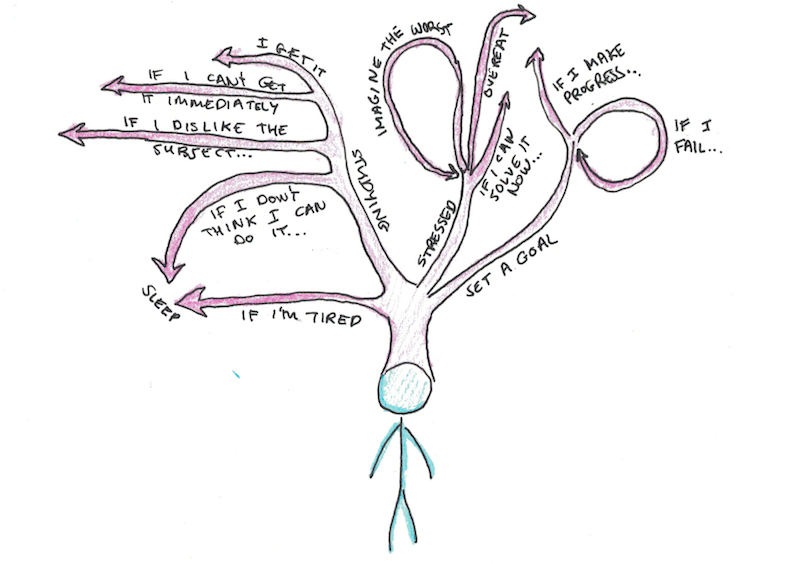
Your total life strategy is a collection of every habit, behavior and thought pattern, conscious and unconscious, that you use to solve the problems you have in life, meet your needs and stay alive.
Think of yourself as an organism, that has needs and goals, that needs to survive in your environment. Obviously, your needs, goals and environment are much more complex than most simple organisms, but the same principle remains. How do you get what you need, avoid what will hurt you and reach your goals?
To solve this problem, you develop a collection of thoughts, behaviors and habits to deal with all the different challenges you face in life.
Sometimes your strategies will be pretty good. Maybe you exercise regularly, don’t overeat and get plenty of sleep.
Other times your strategies will be terrible. Maybe you procrastinate all semester on studying and then cram right before the final exam, only to barely squeeze by.
The point to understand is that your total life strategy represents some kind of response to the challenges in your life. Importantly, this includes both consciously intended goals and tactics, but also a lot of behaviors that are driven by feelings and intuitions where the reasons are often opaque.
Self-Improvement is Adjusting Your Total Life Strategy
This brings us to the titular question: what is self-improvement? By this understanding, self-improvement is any change you try to make to your total life strategy.
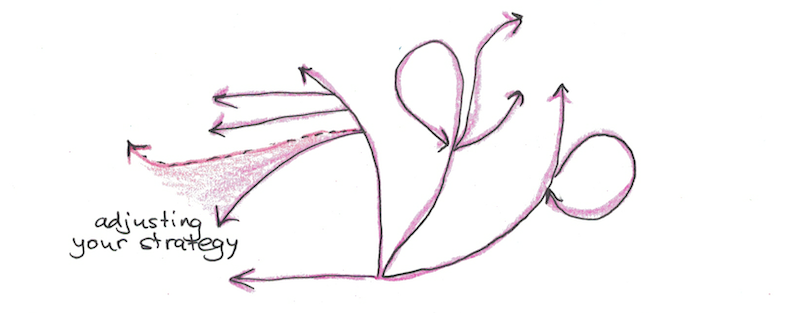
External improvement needs to be separate here, of course, because it’s possible to have one’s fortunes rise or fall without fundamentally changing who they are as a person. Self-improvement, in contrast, must change who you are as a person.
In addition to this understanding of self-improvement, I think there are two useful additional concepts that help make the task of improving oneself more clear.
1: Stable Strategies (Imperfectly) Solve Your Problems
Any total life strategy you have that persists must be stable. In order to be stable, it must reduce the problems you have enough so that they’re at least at a local minimum.
Think of water flowing. It always wants to go downhill. Closer to the center of the earth is the place where it wants to go. However, sometimes it might get trapped on a mountain lake. This is because there’s a local depression surrounded by higher sides so that, in order to get out, it must go uphill first. Water can’t do this, so it stays stuck, even though it wants to go all the way to the bottom.
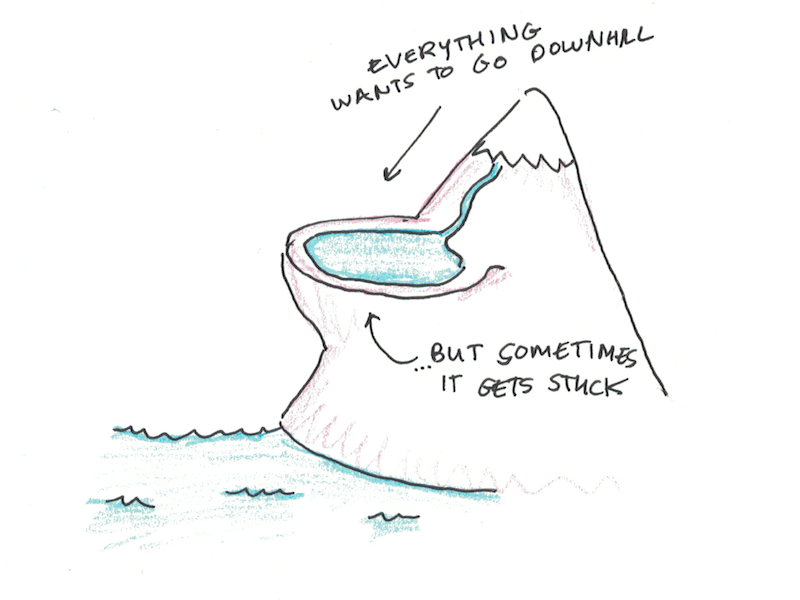
Your life, in a sense, is like this kind of problem. You’re trying to meet your needs and goals = going downhill. Sometimes, however, your strategies aren’t very effective = being on the mountain lake. However, if your strategies are stable, then there must be something holding them up there, otherwise you’d settle into a better way of doing things.
Knowing this means that often self-improvement is a delicate act of engineering. Sometimes you may be trying to siphon the water from a higher lake to a lower reservoir below. You may need to pump the water up somewhere higher first, before it can settle down somewhere else.
2: Conscious Willpower is Extremely Limited
The second problem of self-improvement is that most of your total life strategy is executed below the threshold of your awareness.
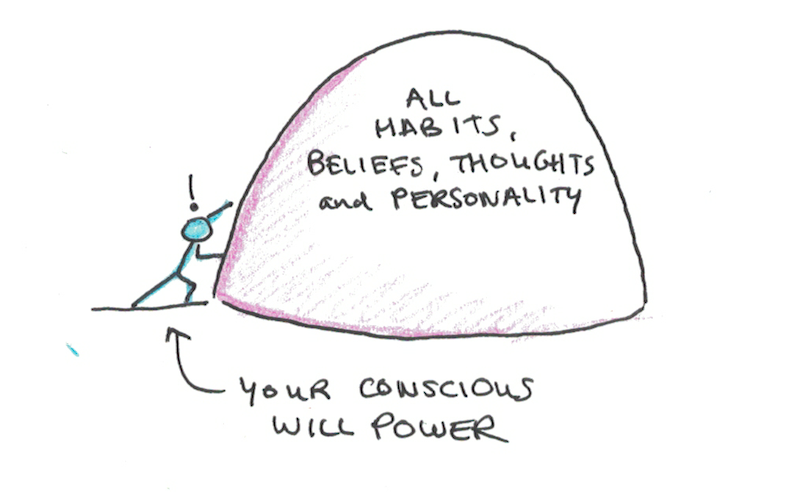
Sometimes this is because your attention is elsewhere, and if you paid really close attention, you could notice things you’re doing now that you currently ignore. Other times, this is because the brain circuits that execute the behavior are not open to introspection. Therefore, all you have are impulses and feelings, but you may not understand why you have them or how to change them.
Since conscious willpower is limited, this means that you usually can’t change your total life strategy through heroic acts of self-determination. You can sometimes make large changes seemingly fast, but that’s only when the structure of your strategies were almost at a tipping point, and so they were already poised to roll down into a different stable state.
Most of the time you’re not going to be able to do this. Instead, you’re going to need to take time and make careful, measured progress in self-improvement.
Implications of Your Total Life Strategy
What are the implications of this view of self-improvement?
1. Self-Improvement Starts by Recognizing How You’re Already Solving Your Problems
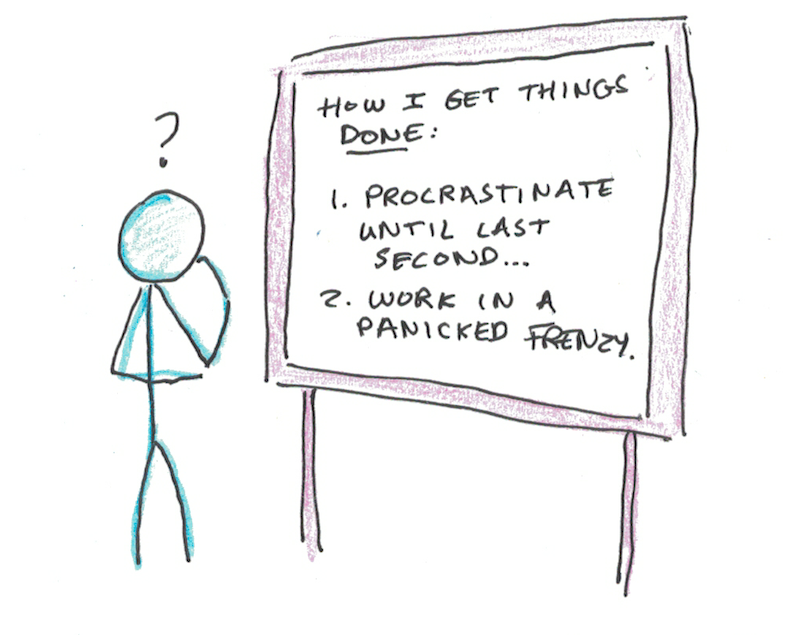
The first is going to be recognizing that when your idealized attempts at changing who you are fail, it is usually because you failed to recognize something your previous strategy was designed to solve.
Overeating when you’re stressed, may not be the ideal habit. But it may comfort you when you’re in a negative state, and thus fulfills some needs. Simply cutting it (without attending to the problem it solves) may not be stable, because the next time you get stressed, you’ll fall back on overeating again.
Intelligent self-improvement efforts need to take these things into account. It is often a matter of testing out different solutions, and if they don’t work, noticing why they failed so you can engineer a different response. I wrote a little about doing this with meditation, noting my first two attempts at regular practice failed, and what I was attempting for a third time.
2. Only Gradual Changes to Your Total Life Strategy are Possible
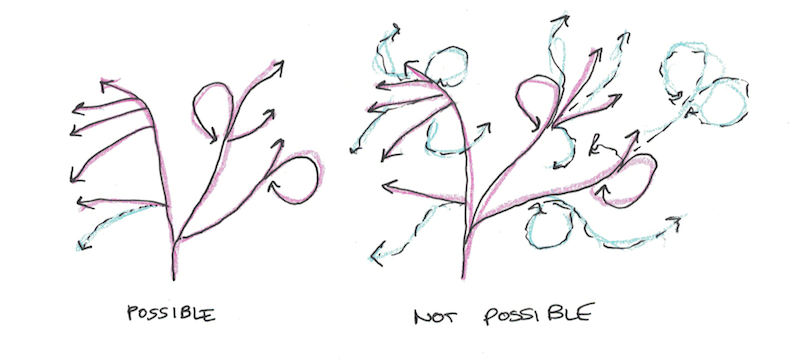
The second implication of this view is that, since conscious effort is highly constrained, we can only make small changes to our total life strategy at any particular moment. These changes are minuscule and must be done repeatedly over a long time to push the full structure of our beliefs, thoughts and behaviors into a new stable configuration.
A common misunderstanding of this view is that this means that all your goals should be slow and patient, and you should never try anything daring or ambitious. However, this confuses slow changes to your total life strategy, with doing things slowly itself.
Your total life strategy may already include patterns which marshal motivation and resource for intense bursts of effort. Or it may include patterns of procrastination and avoidance. Making adjustments to your total life strategy has to happen slowly, but the actual strategies themselves may be fast or slow.
I know this sounds confusing, so let me give an example to make it clearer.
Why Gradual Change to Total Life Strategy Doesn’t Mean Gradual Change to Daily Life
When I undertook the MIT Challenge, my life changed drastically. I went from not studying much at all, to doing it a huge amount of time, every day, for almost twelve months. This is hardly a “gradual” change in my behaviors.
However, this project came after a long number of years working on other projects. So I had already built in patterns of handling new goals, working on them for long periods of time, sustaining motivation and focus, organizing my behavior, etc..
Therefore, even though, superficially, the day before and after I started the challenge my life looked much different, my total life strategy, didn’t change much at all. Of course, there was some changes I made, and some effort involved, but the patterns I used were all ones that I had built up in the past.
You may have experienced something similar when you moved to a new city, or started a new job. Your life (in the moment) changed dramatically. However, you were still the same person, with the same strategies and coping mechanisms.
This doesn’t answer the question of whether it makes more sense to pursue intense, aggressive projects or slow, patient ones. That’s a different question, that has a nuanced answer depending on what you’re trying to do. Rather, I just want to illustrate the distinction between making gradual changes in your total life strategy and gradual changes in your daily life.
How You Can Apply This to Make Lasting Self-Improvement
To summarize: your life is defined both by the things you have and who you are as a person. You can improve your external situation without improving yourself, but that tends to result from luck and circumstances you can’t control. Therefore, I always suggest focusing on self-improvement over external improvement as the primary cause of success and happiness in life.
Self-improvement itself involves making changes to your total life strategy. These are the sum total of all behaviors, thoughts, beliefs and responses (both conscious and unconscious) that you use to meet your needs, reach your goals and overcome your problems in life.
The total life strategy you have right now, when it is stable, must be solving some kind of problem in order to persist. If it didn’t solve any problem, or there were an effortless way to make it better, it wouldn’t be stable, and you’d naturally drift to the better solution.
All self-improvement is an engineering task to try to identify your current strategies, how they meet your current needs and solve your current problems, and figuring out how to adjust them into a better configuration that is also stable.
Because conscious willpower is extremely limited, you cannot make large adjustments to your total life strategy. Instead, you can only make small shifts. This doesn’t imply large, superficial changes are impossible, but simply that you will still be the same person, with the same responses and drives, underneath it all.
Any process of self-improvement must start by recognizing who the person is who is trying to solve the problem. Then it must ask what small and stable changes can be made to become the person where the problem has been solved.


 I'm a Wall Street Journal bestselling author, podcast host, computer programmer and an avid reader. Since 2006, I've published weekly essays on this website to help people like you learn and think better. My work has been featured in The New York Times, BBC, TEDx, Pocket, Business Insider and more. I don't promise I have all the answers, just a place to start.
I'm a Wall Street Journal bestselling author, podcast host, computer programmer and an avid reader. Since 2006, I've published weekly essays on this website to help people like you learn and think better. My work has been featured in The New York Times, BBC, TEDx, Pocket, Business Insider and more. I don't promise I have all the answers, just a place to start.